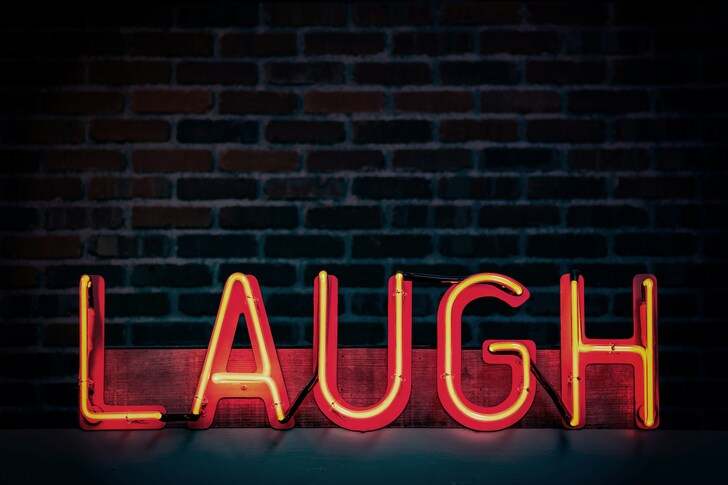Comedy acts as a universal glue that binds people through shared laughter. It’s not merely about getting a quick laugh; it’s a deep dive into human experiences, perspectives, and emotions. For anyone looking to appreciate the vast landscape of comedy, understanding its different types is essential.
Comedy isn’t just entertaining, but it’s also therapeutic, offering an escape from the stresses of daily life. It bridges cultural gaps and allows us to view the world from a different lens. Take a moment to appreciate how comedy plays a role in these aspects of life—in live performances, on screen, and even in everyday interactions.
Each form of comedy offers a unique flavor and purpose. It can range from sharp satire that makes us question societal norms, to playful slapstick that leaves us in stitches without needing much dialogue. This diversity makes comedy so fascinating and impactful.

Whether you’re a performer, writer, or just a fan, exploring these various comedic forms enriches your understanding and appreciation of how humor shapes perspectives and reflections. It’s about recognizing the power and finesse behind every joke and act.
Satire: The Sharp Wit of Social Commentary
Satire stands out among the many forms of comedy for its ability to deliver powerful messages through humor. By exaggerating human vices and follies, it draws attention to societal and political issues with a unique blend of wit and critique. All with the aim of sparking change or, at the very least, provoking thought.
Its rich historical roots stretch back to classical antiquity. Writers like Voltaire and Jonathan Swift were experts in this field, using their works to challenge the norms of their times. Today, television shows like “Saturday Night Live” and publications like “The Onion” continue this tradition, highlighting absurdities with a comedic twist.
Creating effective satire involves balancing humor with insightful critique. It’s about striking a chord without crossing into territory that’s insensitive or misunderstood. This requires a deep awareness of the topic and context, ensuring that the humor hits its intended target without collateral damage.
Satire isn’t without its challenges. It often treads a fine line between comedic brilliance and controversy. The reaction to satirical content can vary significantly, making it both a bold and daring choice in the comedy world. When done right, though, it’s a force for good, pushing audiences to reflect and engage with the world in a more critical manner.
The Charm of Slapstick: Physical Comedy at Its Best
Slapstick comedy stands as one of the oldest and most straightforward forms of humor, relying on physical antics to ignite laughter. This type of comedy doesn’t require complex dialogue or narrative; it uses exaggerated movements, pratfalls, and visual gags that speak universally, surpassing language barriers.
Dating back to the commedia dell’arte of the Italian Renaissance, slapstick’s journey through time showcases its timeless appeal. It found its true golden age during the silent film era, with legends like Charlie Chaplin and Buster Keaton leading the charge. These performers utilized physicality and timing to create memorable scenes that continue to resonate.
The beauty of slapstick lies in its simplicity. It’s an art form that uses minimalistic setups to achieve maximum comedic impact, turning everyday situations into laugh-out-loud scenarios. Anyone exploring or trying their hand in comedy will find slapstick to be a rewarding challenge. It requires practice, precision, and an innate understanding of timing to execute effectively.
While it may seem dated to some, slapstick remains a foundational element in modern comedies. Movies, TV shows, and even cartoons today often include slapstick elements, proving its enduring popularity.
For anyone looking to engage with humor that’s direct and often involves a clear physical bravado, slapstick is ideal. It’s a reminder of how powerful non-verbal communication can be in comedy and how sometimes the simplest acts can leave the biggest impression on the audience.
Exploring a Spectrum: A Look at Diverse Comedy Genres
Comedy comes in all shapes and sizes, and each genre has its own unique way of engaging audiences. Beyond satire and slapstick, there’s a wide array of comedic styles that cater to different tastes and sensibilities.
Dark comedy, for example, finds humor in the bleak, addressing sensitive and taboo topics with a fearless approach. It challenges conventional boundaries, offering laughs amid discomfort and encouraging deeper reflections.
Improvisational comedy, often seen in clubs or improv shows, thrives on spontaneity. It requires quick wit and an ability to think on one’s feet, offering performers the thrill of unpredictability and keeping audiences on the edge of their seats.
Stand-up comedy boasts its own vibrant culture, where comedians use personal anecdotes and observational humor to connect with the audience. This direct interaction makes it one of the most engaging and personal forms of comedy.
Understanding different comedy types helps in appreciating the art as a whole. Each style offers a unique lens through which we can view and understand our surroundings.
The importance of diversity and representation in comedy cannot be overstated. A broader range of voices and experiences allows for richer, more inclusive humor that resonates with wider audiences.
As we look to the future, emerging trends in comedy continue to push the envelope. New styles are always on the horizon, ready to capture the era’s spirit and offer fresh takes on humor.